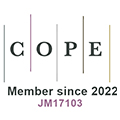REFERENCES
1. Pallotta, G.; Vespe, M.; Bryan, K. Vessel pattern knowledge discovery from AIS data: a framework for anomaly detection and route prediction. Entropy 2013, 15, 2218-45.
2. Short, D.; Lei, T.; Luo, C.; Carruth, D. W.; Bi, Z. A bio-inspired algorithm in image-based path planning and localization using visual features and maps. Intell. Robot. 2023, 3, 222-41.
3. Murray, B.; Perera, L. P. A dual linear autoencoder approach for vessel trajectory prediction using historical AIS data. Ocean. Eng. 2020, 209, 107478.
4. Dalsnes, B. R.; Hexeberg, S.; Flåten, A. L.; Eriksen, B. O. H.; Brekke, E. F. The neighbor course distribution method with gaussian mixture models for AIS-based vessel trajectory prediction. In 2018 21st International Conference on Information Fusion (FUSION), Cambridge, UK. Jul 10-13, 2018. IEEE; 2018. pp. 580-7.
5. Zhen, R.; Jin, Y.; Hu, Q.; Shao, Z.; Nikitakos, N. Maritime anomaly detection within coastal waters based on vessel trajectory clustering and Naïve Bayes Classifier. J. Navigation. 2017, 70, 648-70.
6. Perera, L. P.; Soares, C. G. Ocean vessel trajectory estimation and prediction based on extended Kalman filter. In The Second International Conference on Adaptive and Self-Adaptive Systems and Applications. 2010. https://personales.upv.es/thinkmind/dl/conferences/adaptive/adaptive_2010/adaptive_2010_1_30_40029.pdf. (accessed 24 Jun 2025).
7. Liu, J.; Shi, G.; Zhu, K. Vessel trajectory prediction model based on AIS sensor data and adaptive chaos differential evolution support vector regression (ACDE-SVR). Appl. Sci. 2019, 9, 2983.
8. Suo, Y.; Chen, W.; Claramunt, C.; Yang, S. A ship trajectory prediction framework based on a recurrent neural network. Sensors 2020, 20, 5133.
9. Borkowski, P. The ship movement trajectory prediction algorithm using navigational data fusion. Sensors 2017, 17, 1432.
10. Gan, S.; Liang, S.; Li, K.; Deng, J.; Cheng, T. Long-term ship speed prediction for intelligent traffic signaling. IEEE. Trans. Intell. Transport. Syst. 2017, 18, 82-91.
11. Park, J.; Jeong, J.; Park, Y. Ship trajectory prediction based on Bi-LSTM using spectral-clustered AIS data. JMSE 2021, 9, 1037.
12. Zhao, J.; Yan, Z.; Zhou, Z.; Chen, X.; Wu, B.; Wang, S. A ship trajectory prediction method based on GAT and LSTM. Ocean. Eng. 2023, 289, 116159.
13. Johansen, T. A.; Perez, T.; Cristofaro, A. Ship collision avoidance and COLREGS compliance using simulation-based control behavior selection with predictive hazard assessment. IEEE. Trans. Intell. Transport. Syst. 2016, 17, 3407-22.
14. Zhou, H.; Chen, Y.; Zhang, S. Ship trajectory prediction based on BP neural network. J. Artif. Intell. 2019, 1, 29-36.
15. Gao, D.; Zhu, Y.; Zhang, J.; He, Y.; Yan, K.; Yan, B. A novel MP-LSTM method for ship trajectory prediction based on AIS data. Ocean. Eng. 2021, 228, 108956.
16. Bai, S.; Kolter, J. Z.; Koltun, V. An empirical evaluation of generic convolutional and recurrent networks for sequence modeling. arXiv 2018, arXiv:1803.01271. https://doi.org/10.48550/arXiv.1803.01271. (accessed 24 Jun 2025).
17. Alizadeh, D.; Alesheikh, A. A.; Sharif, M. Vessel trajectory prediction using historical automatic identification system data. J. Navigation. 2021, 74, 156-74.
18. Zhang, X.; Liu, J.; Gong, P.; Chen, C.; Han, B.; Wu, Z. Trajectory prediction of seagoing ships in dynamic traffic scenes via a gated spatio-temporal graph aggregation network. Ocean. Eng. 2023, 287, 115886.
19. Jiang, J.; Zuo, Y.; Xiao, Y.; Zhang, W.; Li, T. STMGF-Net: a spatiotemporal multi-graph fusion network for vessel trajectory forecasting in intelligent maritime navigation. IEEE. Trans. Intell. Transport. Syst. 2024, 25, 21367-79.
20. Wang, S.; Li, Y.; Xing, H.; Zhang, Z. Vessel trajectory prediction based on spatio-temporal graph convolutional network for complex and crowded sea areas. Ocean. Eng. 2024, 298, 117232.
21. Syed, M. A. B.; Ahmed, I. A CNN-LSTM architecture for marine vessel track association using automatic identification system (AIS) data. Sensors 2023, 23, 6400.
22. Chen, X.; Ling, J.; Yang, Y.; et al. Ship trajectory reconstruction from AIS sensory data via data quality control and prediction. Math. Probl. Eng. 2020, 2020, 1-9.
23. Zhao, J.; Yan, Z.; Chen, X.; Han, B.; Wu, S.; Ke, R. k-GCN-LSTM: a k-hop graph convolutional network and long-short-term memory for ship speed prediction. Physica. A. 2022, 606, 128107.
24. Zhang, D.; Li, J.; Wu, Q.; Liu, X.; Chu, X.; He, W. Enhance the AIS data availability by screening and interpolation. In. 2017. 4th. International. Conference. on. Transportation. Information. and. Safety. (ICTIS). , 2017. pp. 981-6.
25. Zhang, Y.; Yan, J. Crossformer: transformer utilizing cross-dimension dependency for multivariate time series forecasting. In The eleventh international conference on learning representations. 2023. https://openreview.net/forum?id=vSVLM2j9eie. (accessed 24 Jun 2025).
26. Cho, K.; van Merrienboer, B.; Bahdanau, D.; Bengio, Y. On the properties of neural machine translation: encoder-decoder approaches. arXiv 2014, arXiv:1409.1259. https://doi.org/10.48550/arXiv.1409.1259. (accessed 24 Jun 2025).
27. Cho, K.; van Merrienboer, B.; Gulcehre, C.; et al. Learning phrase representations using RNN encoder-decoder for statistical machine translation. arXiv 2014, arXiv:1406.1078. https://doi.org/10.48550/arXiv.1406.1078. (accessed 24 Jun 2025).
29. Zhao, L.; Song, Y.; Zhang, C.; et al. T-GCN: a temporal graph convolutional network for traffic prediction. IEEE. Trans. Intell. Transport. Syst. 2020, 21, 3848-58.









